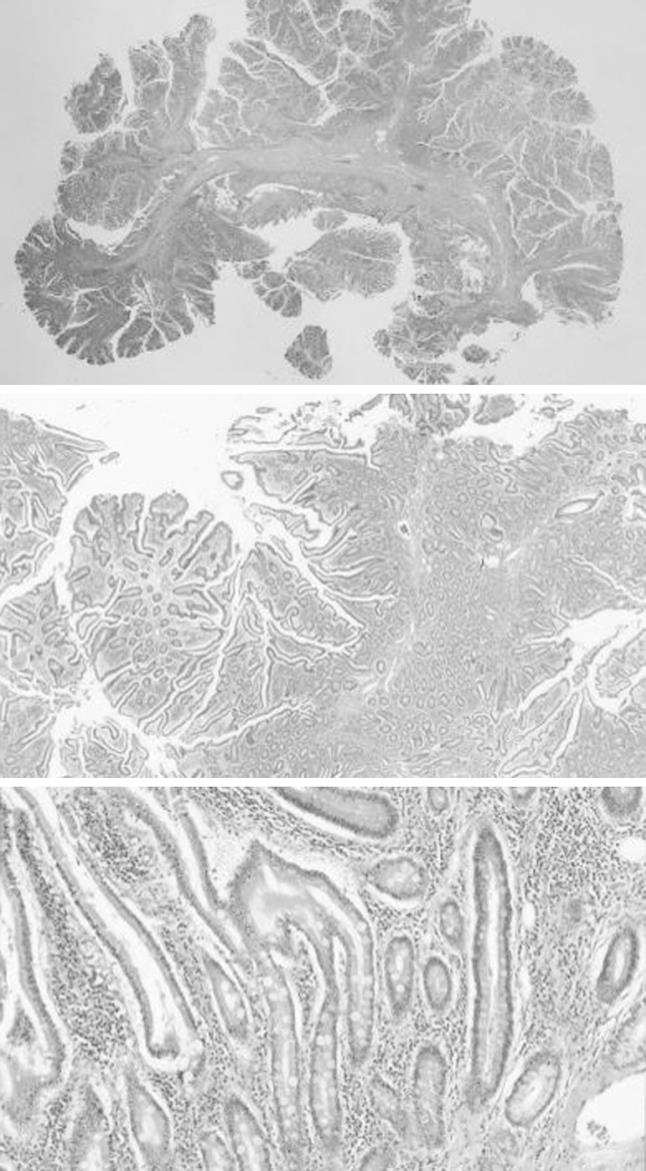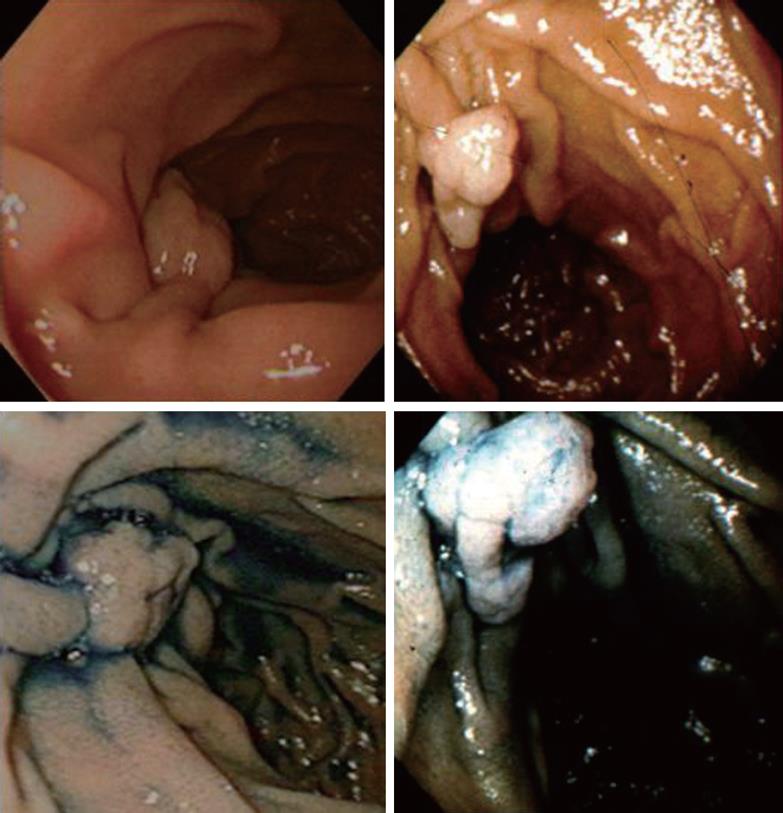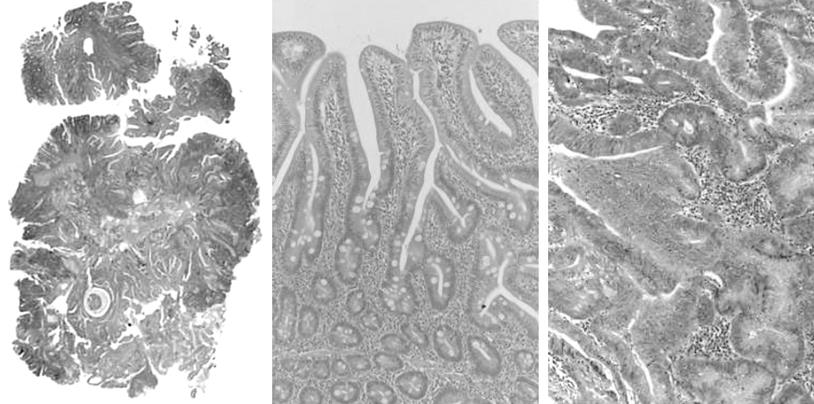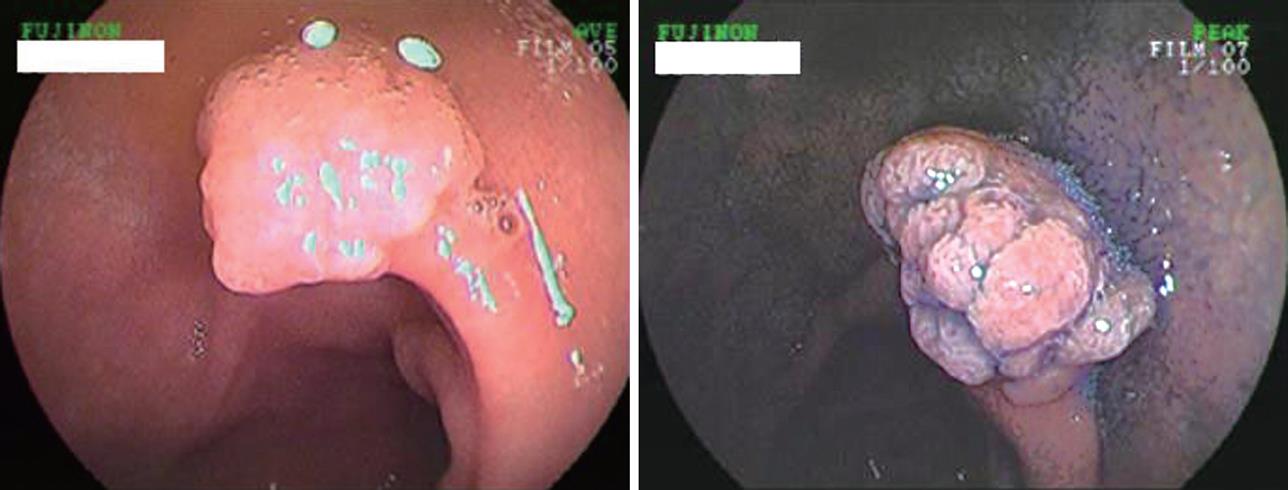Copyright
©2008 The WJG Press and Baishideng.
World J Gastroenterol. Feb 14, 2008; 14(6): 944-947
Published online Feb 14, 2008. doi: 10.3748/wjg.14.944
Published online Feb 14, 2008. doi: 10.3748/wjg.14.944
Figure 1 Upper gastrointestinal endoscopy in patient 1 revealed a semi-pedunculated polyp, 18 mm × 15 mm in diameter, on the oral side of the Papilla of Vater.
The polyp showed an irregularly lobular surface and slightly whitish color with diffusely scattered white spots on the surface.
Figure 2 Histologically, the polyp consisted of branching bundles of smooth muscle fibers covered by hyperplastic duodenal mucosa.
Figure 3 Upper gastrointestinal endoscopy in patient 2 revealed a peduncular polyp, 10 mm × 8 mm in diameter, in the second portion of the duodenum.
The polyp showed an irregularly lobular surface and slightly whitish color with diffusely scattered white spots on the surface.
Figure 4 Histologically, the polyp consisted of branching bundles of smooth muscle fibers covered by hyperplastic duodenal mucosa containing a focus of cancer near the surface.
Figure 5 Upper gastrointestinal endoscopy in patient 3 revealed a semi-pedunculated polyp, 10 mm × 10 mm in diameter, in the duodenal bulb.
The polyp showed an irregularly nodular surface and slightly whitish color with diffusely scattered white spots on the surface.
Figure 6 Histologically, the polyp consisted of branching bundles of smooth muscle fibers covered by normal duodenal mucosa.
Brunner’s glands existed in the central part of the polyp.
- Citation: Suzuki S, Hirasaki S, Ikeda F, Yumoto E, Yamane H, Matsubara M. Three cases of solitary Peutz-Jeghers-type hamartomatous polyp in the duodenum. World J Gastroenterol 2008; 14(6): 944-947
- URL: https://www.wjgnet.com/1007-9327/full/v14/i6/944.htm
- DOI: https://dx.doi.org/10.3748/wjg.14.944


















